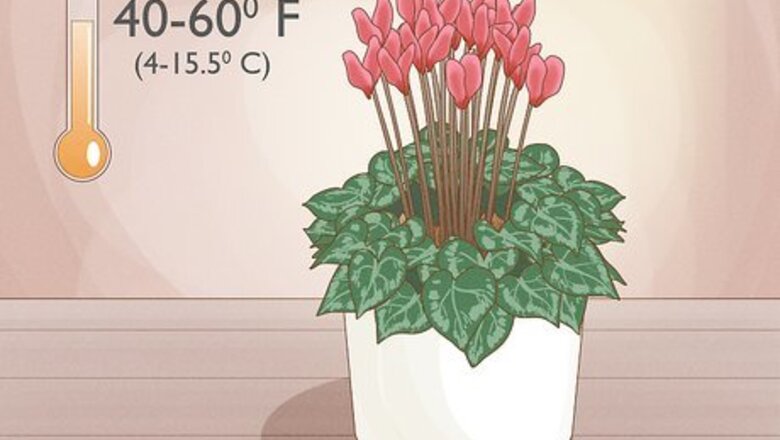
views
Caring for Indoor Cyclamen Plants
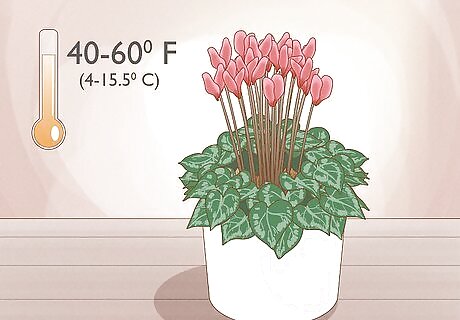
Keep the temperature around 60° F (15.5° C). Cyclamen bloom during the winter in their natural habitat. They prefer temperatures between about 40° and 60° F (4°-15.5° degrees C). This is pretty chilly for indoors, but if you keep your house on the cooler side, your cyclamen will be happy. If the temperature gets above 65° F (18° C) during the day, or dips under 50° F (10° C) at night, cyclamen usually won’t succeed. Although they like cool environments and good air circulation, keep cyclamen away from drafty areas.
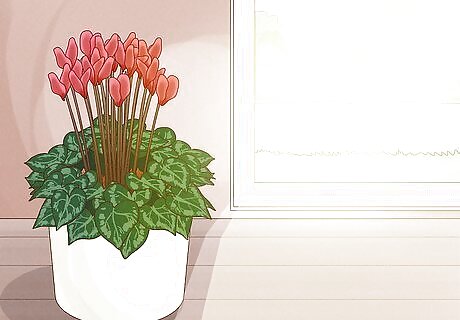
Give cyclamen bright but indirect sunlight. Cyclamen love sunlight, but direct sunlight is a bit much for them. They don’t like that much heat in general, and hotter temperatures will often force the plants to go into dormancy. A sunny window is great for them, as long as the sunlight isn’t direct and the temperature is cool. An east or north-facing window is a good option.

Encourage a humid environment during the winter. Daily misting is a good way to provide some humidity for your cyclamen when they’re in bloom. Another great option is to position their pots over a pebble-filled tray of water. They will not do well if the environment is dry or arid, and they crave moisture.
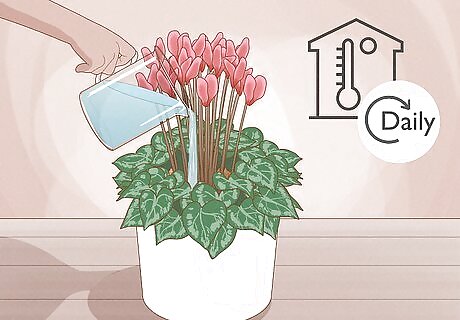
Water them daily with room temperature water. Keep their soil moist but not soggy. Touch the soil daily and when it feels dry, water them with room temperature water. Always water cyclamen near their base, and never pour water over the crown of the plant. This can cause the corm (the bulbous part at the base of the stem) to rot. You can use tap water for this, as long as you've let the water come to room temperature first.
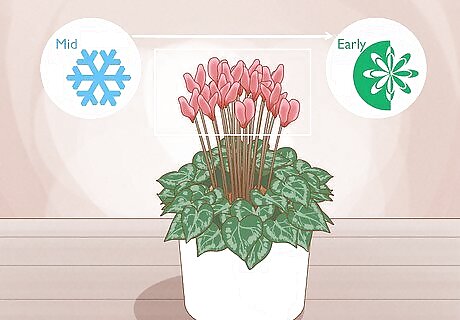
Expect blooms from mid-winter until early spring. As long as the temperature and light conditions are met, cyclamen will usually bloom from mid-winter until late spring. In some cases, very happy cyclamen may even bloom until early summer. The bloom colors vary, and you may see pink, red, white, striped or multi-colored blooms.
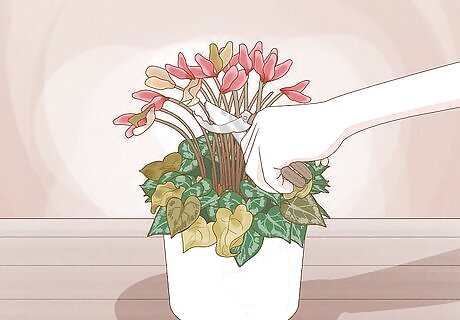
Prune spent flowers and yellow leaves while they’re in bloom. Pruning will prolong the blooming season, because this allows all the nutrients to go to the healthy blooms and leaves. Use mini floral snips to cut off the dead blooms. You can use the snips to remove yellow leaves, as well, or simply pinch those off.

Stop watering them once the blooms fade in late spring. Once new blooms stop forming and the old blooms are fading away, stop watering the cyclamen. The plants go into dormancy in the summer. If the soil stays moist during dormancy, the tuber (or corm) will rot and the plant will die. Once the soil gets dry, you won’t need to re-moisturize it all summer long. While the cyclamen is dormant, you can store it in its pot or dig up the corm and keep it in a box of dry peat moss.

Dig up the corm and replant it in early fall. When cyclamen go into dormancy, their leaves turn yellow and they look dead. They aren’t dead! Dig up the corm, replant it in the fall, and start watering it again when new growth appears. Your cyclamen will produce another season of blooms. Cyclamen can live for many years and even though they look dead when dormant, they will spring back once the temperatures cool down. The corm is the tiny bulb at the bottom of the stalk. The plant's roots grow out of this bulb. The corm sits at ground level and is mostly visible, and the roots grow into the underground. Store the corm somewhere dry, like a box of dry peat moss kept in a cool, low-humidity area of your home.
Caring for Cyclamen Plants in the Garden
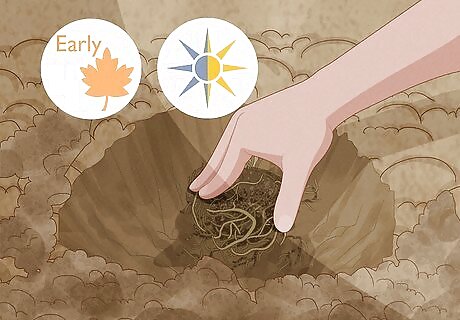
Plant the corm or young plant in a shady area in early fall. Cyclamen are winter bloomers, so the best time to plant the corm or young plant in the ground is early fall. Don’t plant them too early, since they may react badly to the late summer heat. They love light but not direct sunlight, so choose a shady area of your garden that gets partial sun. In their natural habitat, cyclamen bloom under large deciduous trees and along rocky, shaded ridges. If any area of your garden is similar to this, your cyclamen will love to be planted there. Avoid planting cyclamen seed directly in the ground. Start the seed indoors. Once it sprouts, the corm develops and the plant grows out of the corm.
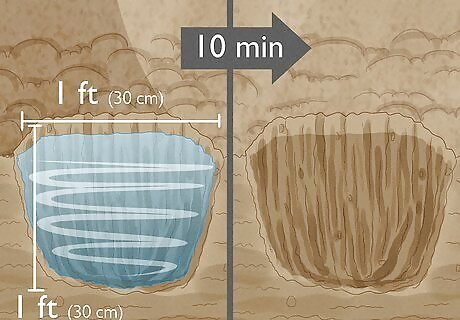
Plant them in rich soil that drains well. Cyclamen do well in a wide range of soil types, although they tend to like sandy or clay soil the most. To check drainage, dig a 1 ft (30 cm) by 1 ft (30 cm) hole and fill it with water. If the water soaks into the ground in 10 minutes or less, it drains well. If it hasn't absorbed into the ground after an hour, it has poor drainage. To improve drainage, add organic matter like compost, manure, or peat moss. Cyclamen will rot in soggy soil that doesn’t drain well.

Check the soil pH for a slightly acidic range of 6-7. Cyclamen like slightly acidic soil. To test your soil, buy a kit from a home improvement store or nursery and follow the instructions. Anything under a pH level of 6 is too acidic. Anything above 7 is too alkaline. If you need to reduce your soil's acidity, add garden limestone to it. To raise the acidity, add sulfur, gypsum, or sphagnum peat moss.

Plant them 2 in (5.1 cm) deep and 6 in (15 cm) apart. Cyclamen are small plants, usually only reaching about 8 in (20 cm) tall and 6 in (15 cm) in diameter. Cyclamen don’t need tons of room, and they aren’t competitive with other plants for root space, either. You can plant them among trees and shrubs. A small amount of the corm should be above ground when you plant it.
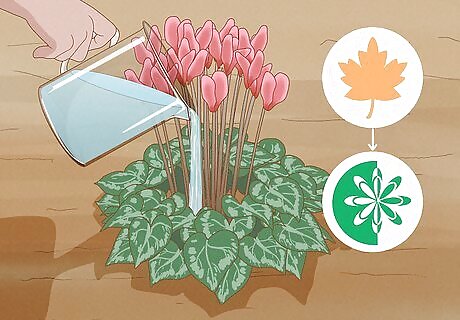
Water cyclamen frequently from fall until spring. Cyclamen need water during their blooming season, which runs from fall until late spring. Check the soil daily and if it feels dry, give them water. Try to keep the soil moist at all times. Water cyclamen at their bases, not over their crowns, or you may encourage rot. Cyclamen go into dormancy in early summer. Do not water them during this time.
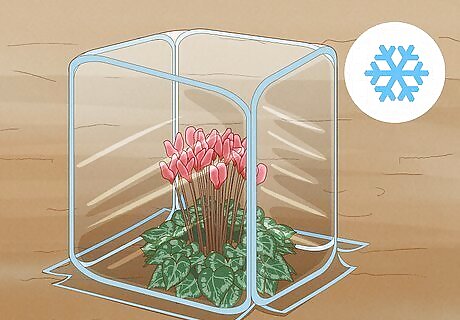
Cover the plants during freezing temperatures. Although they love cool conditions, cyclamens aren’t fans of frost. Whenever a frost is in the forecast, cover them with a lightweight plastic sheet, or even loose leaves or evergreen boughs. That’s all the protection they need. Remove the covering as soon as you’re able to after the threat of frost has passed.
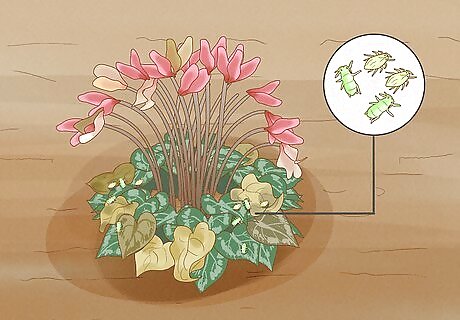
Check the foliage regularly for aphids. Pests aren’t a big problem for cyclamen. However, aphid infestations are known to happen. Luckily, they tend to overrun a plant when the leaves are in decline and the cyclamen is headed for dormancy. These infestations are usually very light and the aphids tend to die off pretty quickly, so in most cases you won’t even need to do anything. If the infestation looks severe, cut back the foliage all the way down to the tuber.
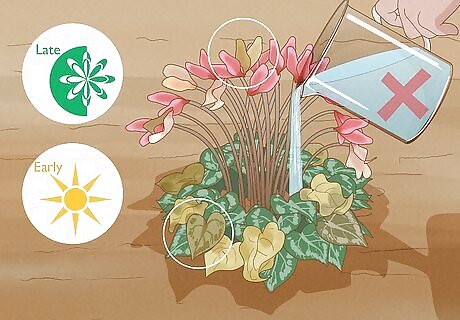
Stop watering when the blooms fade in late spring or early summer. When blooms stop forming and start to fade away, stop watering the cyclamen. During the summer, cyclamen go into dormancy and do not need water. Their leaves turn yellow and they look nearly dead. They aren’t, though! Once the soil gets dry, leave it that way for the rest of the summer. If the soil stays moist while the plants are dormant, the tuber will rot. If you get a lot of rainfall during the summer, dig up the corm and store it indoors until fall. Keep the corm in a box of dry peat moss. Start watering the corms again in the fall, and your cyclamen will spring back to life.
Starting Cyclamen from Seed
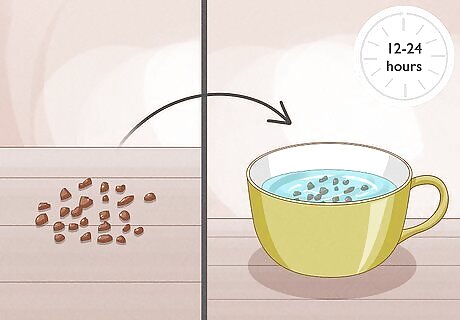
Soak cyclamen seeds in warm water for 12 to 24 hours. Soaking the seeds will soften their seed coats, allowing them to sprout more easily. Soak them in a cup of warm water for 12 to 24 hours. After soaking, rinse the seeds off with room temperature water.
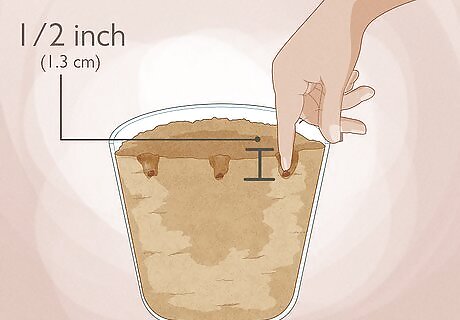
Sow the seeds into pots of compost .5 in (1.3 cm) deep. Fill small pots with compost. Sow the seeds .5 in (1.3 cm) deep, spacing them evenly apart. They only need to be spaced a few inches or centimeters apart, so feel free to sew multiple seeds in a single pot. Sprinkle a thin layer of vermiculite or compost over the seeds.
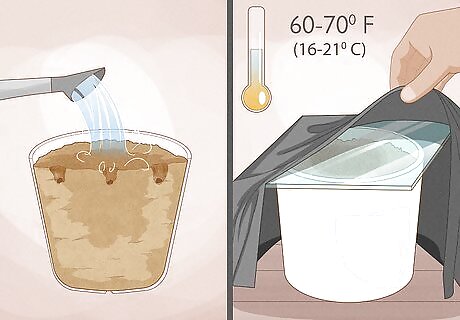
Cover the pot to block out the light and encourage germination. Water the soil lightly, then cover the pot with a sheet of glass and a piece of black tarp. This will shut out the light and encourage germination. Keep the temperature no higher than 60°F to 70°F (16°C to 21°C).
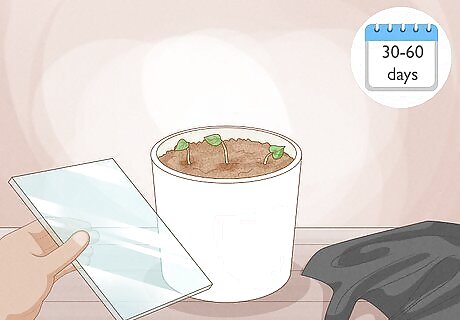
Wait 30 to 60 days for seedlings to appear. Check the pot frequently for sprouting. It usually takes 30 to 60 days. Once the seedlings appear, remove the glass and tarp. Place the pot in a sunny window.
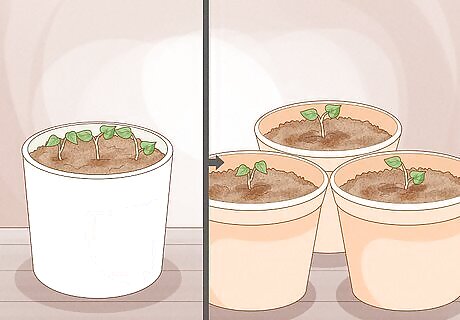
Plant the seedlings in separate pots when 2 to 3 leaves appear. Each seedling will feature a tiny tuber (or corm) at its bottom, which it grows out of. Once the seedlings have 2 to 3 leaves on them, transplant them into their own pots of compost to give them room to grow. Make sure the tiny tubers sit level with the soil.




















Comments
0 comment